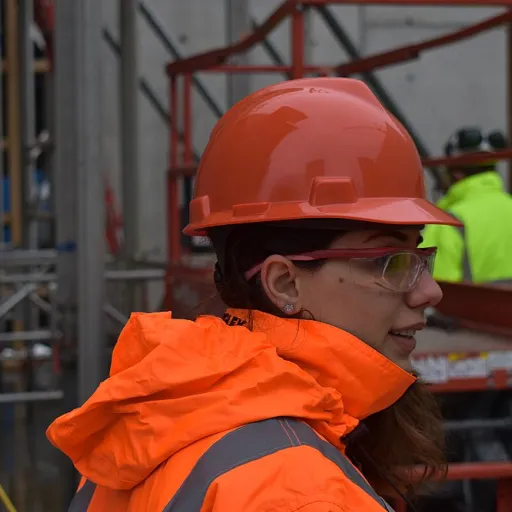
Understanding storeroom picking technologies from Silicon Valley
What Makes Storeroom Picking Technologies Unique?
Storeroom picking technologies from Silicon Valley are reshaping how Indian offices manage their inventory and supply chain. These solutions, originally designed for large warehouses and fulfillment centers, are now being adapted for office environments. The core idea is to use advanced warehouse management systems (WMS), robotics, and automation to improve accuracy, efficiency, and real-time tracking of office supplies and resources.
Key Components of Modern Storeroom Solutions
- Warehouse Management Systems (WMS): These systems help offices track inventory, automate order fulfillment, and manage storage retrieval efficiently. They offer real-time data and inventory tracking, reducing manual errors and improving inventory accuracy.
- Automation and Robotics: Technologies like automated storage and retrieval systems (ASRS) and robots are now being used beyond traditional warehouses. Companies such as Ambi Robotics have developed solutions that can handle repetitive picking tasks, freeing up human resources for more complex work.
- Machine Learning and Data Analytics: Machine learning algorithms analyze inventory movement and usage patterns, helping offices optimize their supply chain and resource allocation. This leads to better forecasting and less wastage.
- Integration with Existing Systems: Modern storeroom technologies can be integrated with office management systems, making the transition smoother and ensuring all data is centralized for better decision-making.
Why Indian Offices Are Paying Attention
Indian offices face unique challenges in inventory management, such as limited space, manual tracking, and inconsistent supply chains. By adopting Silicon Valley-inspired warehouse automation and management systems, offices can achieve higher efficiency and accuracy. These solutions are not just for large warehouses anymore—they are scalable and can be tailored for smaller storerooms and office supply rooms.
For more insights on how effective tracking strategies can enhance office operations, check out this article on enhancing retail partnerships with effective tracking strategies.
Key challenges in Indian office storerooms
Everyday Obstacles in Indian Office Storerooms
Indian offices face unique challenges when it comes to managing storerooms and warehouses. While technology is rapidly advancing, many organizations still rely on manual processes for inventory tracking and storage retrieval. This can lead to inefficiencies and errors that impact the entire supply chain.
- Inventory Accuracy: Manual inventory management often results in discrepancies between recorded and actual stock levels. This affects order fulfillment and resource allocation.
- Limited Automation: Without warehouse automation or robotics, repetitive tasks consume valuable time and increase the risk of human error.
- Data Silos: Information about inventory, supply, and warehouse management systems (WMS) is often scattered across different platforms or spreadsheets, making real-time decision-making difficult.
- Space Utilization: Inefficient storage and retrieval systems lead to wasted space and make it harder to locate items quickly, slowing down the chain of operations.
- Resource Constraints: Many offices lack the budget or expertise to implement advanced solutions warehouse-wide, limiting their ability to scale or adopt new technologies.
- Order Fulfillment Delays: Inaccurate or slow inventory tracking can cause delays in fulfilling internal requests, impacting overall office efficiency.
These challenges are not unique to India, but the scale and diversity of office environments here make them particularly pressing. As the demand for better warehousing and inventory management grows, there is a clear need for systems that offer real-time data, automation, and improved accuracy. For a deeper look at how AI-driven ERP systems are shaping the future of resource management, explore this analysis on transformative ERP solutions.
Understanding these obstacles is the first step before considering how Silicon Valley’s advanced warehouse management systems, robotics, and machine learning can be tailored to Indian office needs.
How Silicon Valley solutions address Indian needs
Bridging the Gap: Adapting Advanced Solutions to Indian Office Realities
Many Indian offices face persistent challenges in storeroom and warehouse management, such as manual inventory tracking, misplaced resources, and inefficient order fulfillment. Silicon Valley’s storeroom picking technologies are designed to address these pain points by leveraging automation, robotics, and real-time data systems.- Automation and Robotics: Automated storage and retrieval systems, including robotics solutions like those from Ambi Robotics, streamline the picking process. These systems reduce manual errors and speed up order fulfillment, making them ideal for busy Indian offices where time and accuracy are critical.
- Real-Time Inventory Tracking: Modern warehouse management systems (WMS) and inventory management software provide real-time visibility into stock levels. This enables office managers to make informed decisions, avoid stockouts, and maintain optimal inventory accuracy.
- Data-Driven Decision Making: Machine learning and advanced analytics help offices optimize resource allocation and improve supply chain efficiency. By analyzing usage patterns, these technologies suggest better storage layouts and replenishment strategies, enhancing overall warehousing operations.
- Seamless Integration: Silicon Valley solutions are designed to integrate with existing management systems, making it easier for Indian companies to adopt new technologies without overhauling their entire infrastructure. This flexibility supports gradual upgrades and reduces disruption.
| Challenge | Silicon Valley Solution | Impact on Indian Offices |
|---|---|---|
| Manual inventory tracking | Automated warehouse management systems | Improved inventory accuracy and reduced errors |
| Slow order fulfillment | Robotics and automated storage retrieval | Faster order processing and fulfillment |
| Resource misallocation | Data-driven inventory management | Optimized resource use and cost savings |
| Lack of real-time data | Real-time tracking and analytics | Better decision-making and supply chain visibility |
Practical steps for implementing new technologies
Getting Started with Storeroom Automation
Introducing Silicon Valley-inspired storeroom picking technologies into Indian offices can seem daunting, but breaking the process into manageable steps helps ensure a smooth transition. These solutions, which have transformed warehouses and fulfillment centers globally, can bring similar efficiency and accuracy to office storerooms when implemented thoughtfully.
Steps for a Successful Rollout
- Assess Current Systems: Begin by evaluating your existing inventory management and storage retrieval processes. Identify gaps in inventory tracking, order fulfillment, and resource allocation. This helps in selecting the right warehouse management system (WMS) or automated storage solutions tailored to your needs.
- Choose the Right Technology: Consider solutions that fit your scale and workflow. Options range from basic inventory tracking systems to advanced robotics and machine learning-powered warehouse automation. Look for systems that offer real-time data, automated retrieval systems, and seamless integration with your supply chain.
- Plan for Integration: Ensure the new management system can connect with your existing office software and supply chain systems. Compatibility with your current warehouse management and inventory management processes is crucial for minimizing disruption.
- Train Your Team: Invest in training for your staff. Even the most advanced technology, like robots or automated warehouse systems, requires human oversight. Training ensures your team can leverage automation for improved accuracy and efficiency.
- Start Small, Scale Up: Pilot the new systems in a single storeroom or department before a full rollout. Monitor inventory accuracy, order fulfillment speed, and resource utilization. Use data from this phase to refine your approach.
- Monitor and Optimize: After implementation, continuously track performance metrics. Use real-time data and analytics from your WMS or automated storage systems to identify bottlenecks and areas for improvement.
Checklist for Implementation
| Step | Key Considerations |
|---|---|
| System Assessment | Inventory accuracy, current tracking methods, resource allocation |
| Technology Selection | Automation level, integration capabilities, scalability |
| Integration Planning | Compatibility with supply chain and management systems |
| Staff Training | Understanding robotics, WMS, and automated retrieval systems |
| Pilot Testing | Data collection, inventory tracking, order fulfillment accuracy |
| Continuous Optimization | Real-time monitoring, feedback loops, system updates |
By following these practical steps, Indian offices can harness the power of Silicon Valley’s warehousing and automation innovations. This approach not only improves inventory management and supply chain efficiency but also sets the stage for future advancements in automated warehouse solutions.
Common pitfalls and how to avoid them
Common Mistakes When Adopting Storeroom Technologies
Bringing Silicon Valley-inspired warehouse automation and inventory management systems into Indian offices can be a game changer. However, many companies face setbacks due to avoidable errors during implementation. Here are some of the most frequent pitfalls and ways to steer clear of them:
- Underestimating Change Management: New technology like automated storage retrieval systems or robotics can disrupt existing workflows. Failing to prepare staff for these changes leads to resistance and inefficiency. Invest in training and clear communication to help teams adapt.
- Neglecting Data Integration: Warehousing solutions often require seamless data flow between inventory tracking, warehouse management systems (WMS), and supply chain platforms. Overlooking integration can result in inaccurate real time inventory and poor order fulfillment. Prioritize systems that support robust data connectivity.
- Ignoring Local Context: Solutions from Silicon Valley may not fit Indian office realities out of the box. Factors like space constraints, resource availability, and supply chain nuances must be considered. Customize automation and robotics deployments to match local needs.
- Overlooking Maintenance and Support: Automated warehouse systems, robots, and retrieval systems need regular upkeep. Skipping this step can cause downtime and reduce inventory accuracy. Establish a maintenance schedule and ensure quick access to technical support.
- Chasing Technology Without Clear Goals: Implementing robotics or machine learning for the sake of innovation, without clear objectives, can waste resources. Define specific targets for efficiency, accuracy, or cost savings before investing in new solutions.
How to Avoid These Pitfalls
- Engage all stakeholders early, from warehouse staff to IT, to ensure buy-in and smooth adoption.
- Choose management systems that are compatible with your existing supply chain and inventory management processes.
- Start with pilot projects in select storerooms or fulfillment centers to test solutions before scaling up.
- Monitor key metrics like inventory accuracy, order fulfillment speed, and resource efficiency to measure the impact of automation and make adjustments as needed.
- Stay updated on advancements in warehousing technology, such as Ambi Robotics and machine learning-driven tracking, but always assess their fit for your specific context.
By being mindful of these common mistakes and taking proactive steps, Indian offices can unlock the full potential of Silicon Valley-inspired storage and retrieval solutions, ensuring efficient and accurate warehouse operations.
Measuring success and optimizing storeroom operations
Setting Up Metrics for Storeroom Efficiency
Once new warehouse management systems and automation solutions are in place, the next step is to measure their impact. Indian offices should focus on key performance indicators (KPIs) that reflect improvements in inventory accuracy, order fulfillment speed, and resource utilization. Tracking these metrics helps ensure that investments in robotics, automated storage retrieval systems, and real time inventory tracking deliver tangible results.
- Inventory Accuracy: Use data from WMS and automated warehouse systems to compare recorded stock with actual counts. High accuracy reduces supply chain disruptions and improves order fulfillment.
- Order Fulfillment Time: Measure the time taken from order receipt to dispatch. Automation and robotics, such as those from Ambi Robotics, can significantly reduce this duration.
- Resource Efficiency: Monitor how technology impacts manpower needs and warehouse space utilization. Efficient systems free up staff for higher-value tasks.
- Error Rates: Track picking and storage errors. Automated solutions and machine learning-powered management systems can minimize mistakes.
Continuous Improvement Through Data
Modern warehousing solutions generate a wealth of real time data. Regularly review this information to identify trends and bottlenecks. For example, if inventory tracking shows frequent discrepancies, it may signal the need for further staff training or system calibration. Use dashboards and reports from your management system to guide decision-making and optimize processes.
Common Tools for Monitoring Success
| Tool | Purpose | Benefit |
|---|---|---|
| Warehouse Management System (WMS) | Centralizes inventory management and tracking | Improves accuracy and visibility across the supply chain |
| Automated Retrieval Systems | Automates storage and retrieval of goods | Speeds up order fulfillment and reduces errors |
| Robotics & Automation | Handles repetitive tasks | Boosts efficiency and consistency in warehouses |
| Data Analytics Platforms | Analyzes performance data | Enables proactive optimization of warehouse operations |
Optimizing for Long-Term Success
Optimization is not a one-time effort. Regularly revisit your KPIs and adjust processes as your office grows or as new technology becomes available. Engage with your technology providers for updates and support. Encourage feedback from staff who use the systems daily, as their insights can highlight practical improvements. By focusing on continuous measurement and adaptation, Indian offices can ensure their investment in Silicon Valley-inspired warehousing solutions delivers ongoing value.











